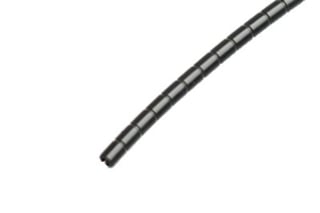.jpg?width=400&name=shutterstock_498295828%20(1).jpg) If you are trying to decide on a product to include in your network design or installation – and you have a choice between several products that meet your technical specifications – is price the only factor that will help you to make your decision?
If you are trying to decide on a product to include in your network design or installation – and you have a choice between several products that meet your technical specifications – is price the only factor that will help you to make your decision?
While it can be tempting to prioritize price, it's also important to think ahead and look to your business' future. Therefore, an important factor to consider during your product selection for FTTH is the simplicity of your installation.
Simplicity
When it comes to fiber installation, it is commonly understood that you need specialized expertise (installing, splicing), and specialized equipment (splicers, blowers, trenching, etc.). The cost of these things is well known and considered to be part of doing business, and is often the decisive factor in how or if an FTTH installation goes forward.
 What is the reason these factors are costly?
What is the reason these factors are costly?
Basically, it comes down to time. You pay a cost per hour to a contractor or internally for fiber installation. The number of steps required to complete an installation determines how long the installation takes and, therefore, determines the cost. The more steps, the higher the cost.
Therefore, it would be wise to examine your own installation procedures to find steps you can eliminate. Some steps can be eliminated by choosing the right method and/ or the right product before you begin.
 Here are some ways using PPC Miniflex® fiber cable and QuikPush™ pre-terminated assemblies, along with microduct, can simplify your fiber drop installation:
Here are some ways using PPC Miniflex® fiber cable and QuikPush™ pre-terminated assemblies, along with microduct, can simplify your fiber drop installation:
- QuikPush™ pre-terminated fiber cable that fits in a 10x6mm microduct – this small size and pre-termination allows quick and easy installation in any circumstances.
- Miniflex® fiber cables that can be pushed, pulled or blown through a 10 x 6mm microduct – you should use cable that can work with any method of installation and doesn't require different personnel, preparation etc. for each method.
- Cables available up to 24 fibers in a duct as small as 6mm ID – this amount of fiber in such a small microduct provides a very cost-effective density.
- 50% or better fill ratio for microduct – avoids wasting space – again, better density without any installation trouble.
- PPC microduct with pre-installed pull string of the correct size and tensile strength is standard – eliminates obstructions with large knots or creating excessive drag and friction. No lubrication required.
- Grooved jackets on the fiber cable provide a natural grip for tying the pull string without needing tape or excessive knots to secure it – no need for heavy knots or long pull socks, forcing larger conduits.Installing fiber cable in microduct can be accomplished with only one installer. No need for splicers, contractors, or construction.
- QuikPush™ assemblies are packaged in spools rather than coils – doesn't spread and uncoil when opened, requiring costly time to get the fiber together and out of the dirt. No specialized training required to operate/ install your fiber cable, microduct. Use your existing installers, with no specialized training.
Using these criteria, you can install a microduct and fiber cable very simply, without the need for splicing or specialized personnel. Time is money. Keep it simple.


